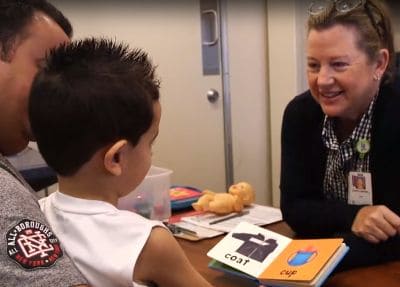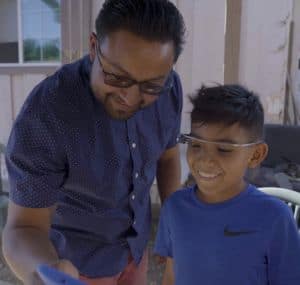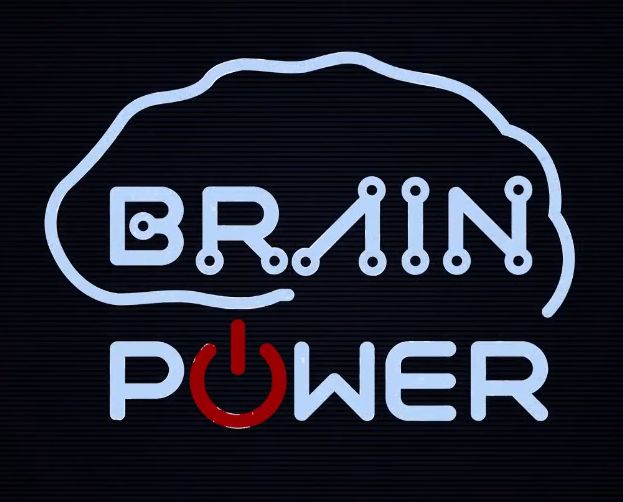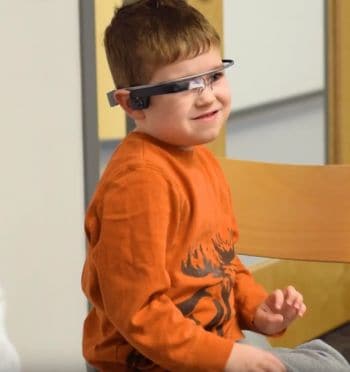Smart glasses are all about adding new and interesting ways to improve people’s lives. We have already discussed the use of smart glasses and AR in surgery, but they also have an important place in improving the lives of autistic people. Smart glasses for autism are here and they are showing incredible results.

Understanding Autism
Now, to understand how smart glasses can help autistic people, it is first important to try and understand autism.
According to the Autism Speaks website, the core symptoms of autism are social communication being challenged and restricted, as well as repetitive behaviours.
Restricted and repetitive behaviors can mean repetitive body movements and motions (e.g. rocking, spinning, spinning wheels), ritualistic behaviors (e.g. lining up objects), extreme interests in specific topics or need for unvarying routine (e.g. same daily schedule).
The main way in which autism symptoms can be helped with the use of smart glasses is through providing help in social challenges, which the person might experience. For example, autistic people can have trouble understanding or using gestures, eye contact, facial expressions or tone of voice.
Furthermore, they can have trouble with emotions – recognizing others’ emotions and intentions, as well as recognizing and expressing one’s own emotions. People with autism can also have have trouble taking turns in conversation, or feel overwhelmed in social situations.
Lack of Trained Autism Practitioners

As autistic people don’t develop social skills on their own, external help is needed to help train them to better understand and participate in social interaction. So far, this has been done with the help of trained autism practitioners.
However, according to the Standford Medicine News Center, there is a lack of autism practitioners. Autism therapy, especially early autism therapy, would be beneficial, but at the moment there just aren’t enough easily available solutions. Currently in the US, children may have to wait as long as 18 months after receiving an autism diagnosis to start treatment.
We can see how dire the situation is, but luckily smart glasses can aid this. The smart glasses are paired with apps, which provide an easily available alternative to having trained practitioners.
Smart glasses are preferred over a smartphone or a tablet in this situation. A wearable device enables the person to have their hands free and able to interact with the environment freely.
Top-Notch Scientists Working on the Systems

Two apps to help autistic children by the use of smart glasses have been created – one by Brain Power and one by Stanford Medicine. They both have similar functions – to help children learn social-emotional skills by turning it into a game.
They aim to help make autistic people self-sufficient. Making the process playful is good because it means that the children will be wanting to learn more and try harder in order to unlock points and rewards. Both of these apps work paired with Google Glass and a smartphone.
Brain Power’s system is called Empowered Brain and is powered by neuroscience developed at the Massachusetts Institute of Technology (MIT) and Harvard. The Brain Power team also collaborated closely with Affectiva, who are the world’s leading emotion AI company, and X, formerly known as Google X.
The Standford app is adorably called the “Superpower Glass” to make it more appealing to children. Superpower Glass has been developed by Stanford Medical’s leading professionals.
There is a small difference between the Empowered Brain system and Superpower Glass, though. While both heavily rely on AI technology for detecting people’s facial expressions and emotions, they aren’t meant to be used in the exact same way.
According to their Indiegogo campaign from 2017, the Empowered Brain system is meant more like “piano lessons (but more fun), or sports practice (but can be done at home)”. It should be used to practice about 30 minutes per day and in sessions. Over time, these sessions should show improvements in behavior. The child can take the skills learned through the sessions into real social scenarios.
However, the Superpower Glass also features a “free play” mode, in which children wear the glasses in their normal everyday environments rather than in sessions, identifying faces and emotions wherever they appear.
3 Games to Help Make Learning Fun
You can get a glimpse into some of the interesting ways in which the creators of the apps are making learning fun on the Brain Power website. For example, there’s a game called Face2Face, which makes a fun game out of an often challenging task for people with autism – it helps the person with maintaining eye contact.
Another game is Emotion Charades, which helps strengthen the child’s ability to read people’s emotions, as in the game they have to guess the facial expression the other person is making.
Autistic people can also have trouble adjusting to new places and situations – which is where the Transition Master app comes in handy. It familiarises the user with the environment before the event, by giving a 360 degree experience of being in that place.
The Empowered Brain is also useful in that it measures the user’s physiological signs of stress and therefore helps adjust the experience appropriately.
The Empowered Brain system also provides information of the user’s progress, both monthly data and total data of all sessions. The system saves data from each session, provides a detailed report of the progress and provides information estimating the child’s potential growth, which is based on previous performance.
This data is useful for the parents who can get reassurance that the therapy is working. It’s also useful for therapists, as the automatically generated data provides them with more information than ever before possible.
How Does one Acquire this Technology?
The Superpower Glass is currently not commercially available, as studies are still being conducted. In fact, there is currently a call for participants on their website.

The Empowered Brain system, however, is already commercially available. There isn’t information about the price on their website, though. If you were curious about the price of the system, you would have to contact them. What’s great is that they offer free demos for people to familiarize themselves with the system in-person before taking the plunge.
However, as the system works paired with Google Glass and that in itself can cost a whopping $1500, the price of the entire system can’t be cheap. Luckily, as they wrote on their Indiegogo campain in 2017, they also offer a payment plan, which probably makes it easier for a lot of parents. Ways of getting external funding are encouraged as well, such as local charities, Medicaid and others.
It’s Been Tried and Tested – and It Works
Both the Superpower Glass and Empowered Brain system have undergone various studies and trials. According to a clinical trial from March 2019, the use of Superpower Glass did indeed show significant improvements in autistic children’s social behaviors.
A study was conducted which aimed to find out the social stigma of wearing Google Glass among autistic school children. The findings were positive and showed that the children did not feel stress when wearing the smart glasses. All the children reported that they would be up for wearing the smart glasses in both school and home settings.

There are also many examples of individual happy clients. On the Brain Power website, you can find the testimonials of many pleased customers. One of them, a special education teacher from Massachusetts says how the student usually has attention difficulties normally, but the minute he put on the glasses, he started focusing.
A young boy called Ethan, who tried the Superpower Glass, said “If other people are feeling different things, I can tell which emotion they’re feeling, which is kind of fantastic”. It is pretty fantastic, indeed.
Though the autism glasses are mainly marketed for children, they can also help adults in proving their social-emotional skills. An adult who got to try out the Empowered Brain system said it’s great how it helps her pick up unspoken communication and helps her detect when she’s “boring people”.
The autism glasses aim for self-sufficiency in autistic people and one of the biggest forms of self-sufficiency is probably having a good job. The Empowered Brain has taken into consideration – they have developed modules to teach job-related skills of particular use among people with autism.
What else is great is that Brain Power themselves have hired several full-time employees on the autism spectrum. The employees help contribute to the core work of the company.
Conclusion
Smart glasses really have the potential to help autistic people. Thanks to the gamified apps, they are especially useful for children, but also work for adults. The main way in which they can be of help to autistic people is by improving social skills and behaviors. AI and AR paired together help people with autism recognize people’s facial expressions and emotions.
Various research and customer experiences have validated the practicality of smart glasses for autistic people. Hopefully as time goes by, more people will learn about these products and they will become more easily available.

